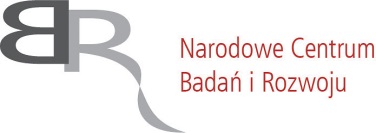
Project realized within the framework of IV Priority Axis: “Increase of scientific and research potential” of the Operational Programme Smart Development 2014-2020, Activity 4.1 “Scientific research and development projects”, sub-activity 4.1.4 “Application projects” co-financed from the means of the European Regional Development Fund.
|
Project title: |
“New generation haulage system of highly productive longwall systems” |
|
Acronim: |
KOMTRACK |
|
Contract No.: |
Contract No. POIR.04.01.04-00-0068/17 |
|
Project objective: |
The project objective is a development and an implementation of a new generation, flexible haulage system of a shearer self-adjusting to changeable inclinations of a longwall conveyor route caused by mining-and-geological conditions and a conducted technological process using highly productive longwall systems. |
|
Planned results: |
Newly developed haulage system will be adjusted to the power of longwall shearers, used at present, but its flexibility (self-adjustment to changeable inclinations of the conveyor route) will have an impact on:
|
|
Project cost: |
9 957 644.85 PLN |
|
Input of European Funds: |
6 768 530.74 PLN |
|
Project realization period: |
July 2018 – June 2021 |
|
R&D Manager: |
Prof. Antoni Kalukiewicz |
|
Project Executive Manager: |
Dr Edward Pieczora |
|
The project is realized by a consortium consisting of: |
KOMAG Institute of Mining Technology – Leader, Foundry Institute, AGH University of Science and Technology – Faculty of Mechanical Engineering and Robotics, Innovative Enterprise of Foundry SPECODLEW Sp. z o.o. and Polish Mining Group S.A. |

















